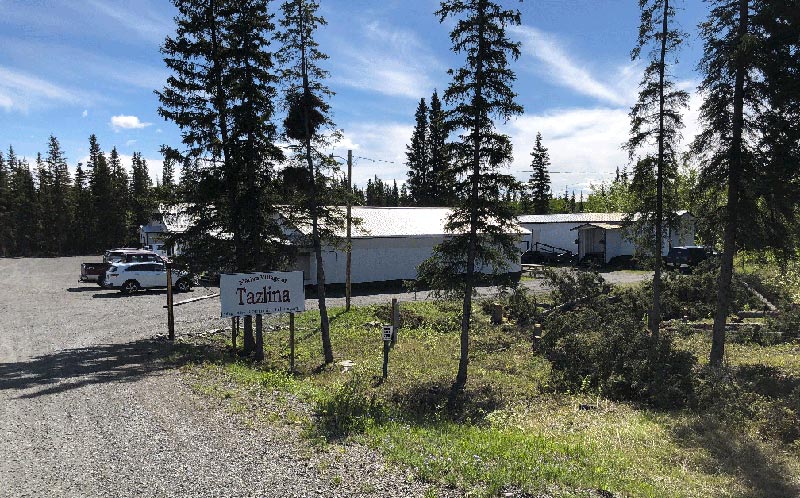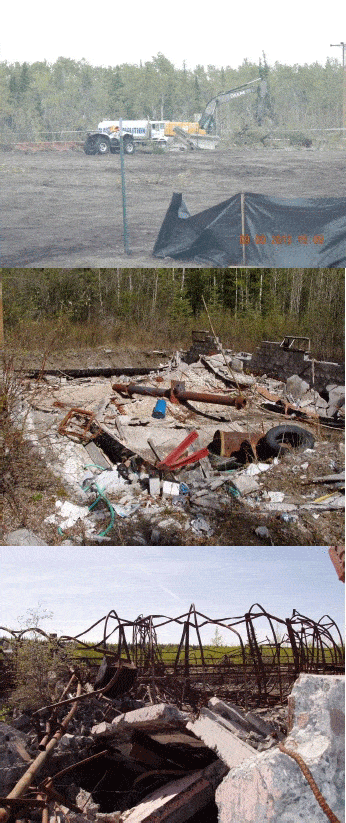
The Ahtna Athabascan people have lived in the Copper River basin for time immemorial. There are eight villages within the Ahtna region; each is unique, but all are connected by the values and traditions of the Ahtna people and culture. In this issue we are highlighting the village of Tezdlen (Tazlina). Located approximately 5 miles south of Glennallen on the Richardson Highway, at mile 110.9, was originally a thriving fishing camp for tribes who would migrate up and down the Copper River and its tributaries. Tazlina is Athabascan for “swift water” and by 1900, a permanent village had been established on the north and south banks of the Tezdlen Na or Tazlina River near its confluence with the Copper River. During the building of the trans-Alaska pipeline Tazlina further developed.
The Native Village of Tazlina (NVT) is a federally-recognized tribe in the community and has two current programs under the Environmental Protection Agency (EPA): Indian General Assistance Program (IGAP) and the Tribal Response Program (TRP). IGAP focuses on Solid Waste Management and partners with the Tribal Response Program (TRP). The TRP is a program which focuses on Tribal lands that have been exposed to or contaminated by hazardous waste materials and is funded by the EPA. NVT applied for and received funding from the EPA for the Tribal Response Program.

In 1954, the Catholic Archdiocese of Anchorage built a boarding school at the end of a dirt road in Tazlina, Alaska. The Copper Valley School (CVS) was built to board students from around the state who did not have a high school in their village. In 1971, the CVS closed due to low enrollment and students attending school closer to home. In 1975, the Archdiocese leased a wing of the school building to an electronics store and in 1976, the entire school burned to the ground leaving rubble, ash and several contaminants in its wake including asbestos.
In the mid 1990’s the Tazlina Village Council started addressing the issue of the school’s rubble and contamination by discussions in Council meetings and directing their Tribal Administrator to obtain grant funding to address the issue of the school site. The Tribal Administrator was granted Indian General Assistant Program funding through the Environmental Protection Agency to focus on the issue. In August 2011, Alaska Native Tribal Health Consortium (ANTHC) and Tazlina Village Council (TVC) held a Vision to Action workshop where pictures were drawn as to what the Village wanted to see for the school site if it was ever cleaned up. This workshop provided Tazlina Village with a vision for the property and that set off a series of discussions with the Copper Valley School Association, Copper Valley Alumni, EPA, ADEC, and ANTHC.Tazlina Village did not own the land but the site was used to access traditional fishing sites on the Copper River. Fish camp roads and trails were established around the site therefore; it became a concern to village members. There was also concern for safety because children played and teens and young adults hung out at the site. The discussion turned to how NVT would clean up lands that did not belong to the village. Talks began to different government officials, EPA, and to anyone who would listen to the concerns.
It was a constant topic of discussion when NVT became eligible for program funding through the Tribal Response Program in 2012. TVC members and NVT Tribal Administrator pushed for something to be done regarding the site. Governor Sean Parnell and Senator Mark Begich visited the area on separate occasions and sent their cabinet members down to inspect the site. After these events, the issue finally began to gain political momentum.
In the meantime, EPA officials started discussions to conduct an environmental review and assessment on the property. In March of 2013, the official EPA report showed asbestos contamination in most parts of the property used by the public. It took Alaska Demolition and Alaska Abatement seven weeks to clean up not only the asbestos and rubble but also 150 acres of the land where dumps had begun to form. This was a long process for Tazlina Village and its residents and thanks is owed to the many contributions by individuals and organizations.
Today, Tazlina’s environmentally responsible focus is to reduce the amount of solid waste in the Tazlina Community and on Tazlina Village lands with a comprehensive recycling program. With the help of local and regional organizations and Solid Waste Removal Crews, the community reduces waste and educates the community on how to recycle.
NVT received a grant from Alaska Energy Authority to build a wood fired boiler unit to heat the four buildings at the Tribal Council headquarters. The construction of the boiler unit began in mid-July 2018, and was completed September 1, 2018. The boiler unit is up and running just in time for winter and the people of Tazlina feel this is a great accomplishment as this project has been 6 years in the making.
Most recently, the Federal Department of Transportation issued Tazlina a grant for the planning of a bike path from the intersection of the Glenn and Richardson Highway to the northern entrance of Copper Center. This bike path will include a much needed pedestrian walkway across the Tazlina River with the planning process 98% complete. During the final phase of the planning process the community is working on acquiring a permanent right of way across 2 pieces of privately own land and once this is accomplished will move on to the construction phase of the project.
For more information on programs and the Native Village of Tazlina visit: www.tazlina.org
